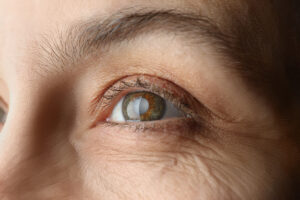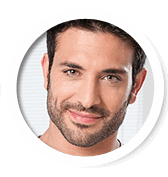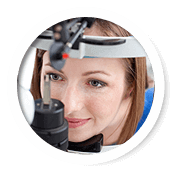 Cataracts are a virtually inevitable part of aging. Anyone fortunate enough to celebrate their 80th birthday almost certainly has cataracts. However, this clouding of the lens usually starts decades earlier. Most of the time, cataracts develop slowly. Most people do not notice the early effects. Eventually, the clouding does affect vision. Dr. George G. Khouri of Palm Beach Eye Center explains how regular eye exams for those 65 and older detect cataracts in the earliest stages.
Cataracts are a virtually inevitable part of aging. Anyone fortunate enough to celebrate their 80th birthday almost certainly has cataracts. However, this clouding of the lens usually starts decades earlier. Most of the time, cataracts develop slowly. Most people do not notice the early effects. Eventually, the clouding does affect vision. Dr. George G. Khouri of Palm Beach Eye Center explains how regular eye exams for those 65 and older detect cataracts in the earliest stages.
What Are Cataracts?
As noted, cataracts and advancing age are intricately linked. That’s why cataracts are the leading cause of vision loss. This clouding results from the breakdown of proteins in the lens, which clump together and create opaque areas.
Cataract Symptoms
Suspect cataracts if you experience any of the following symptoms:
- Halos around lights – This early sign indicates the cataract is no longer letting incoming light pass through the lens as it once did. The same holds true if lights appear brighter or glare increases.
- Color fading – When colors seem harder to distinguish, that may indicate the browning or yellowing of the lens common with cataracts.
- Brighter lights needed – Do you need higher wattage bulbs to read, write or perform other ordinary tasks? That’s another cataract warning sign.
- Worsening night vision – Many older people don’t want to drive after dark because of night vision decline. This is often due to cataracts. Not only does a cloudy lens fog vision, but the glare of headlights makes it more difficult to see.
Cataract Exam
During a cataract exam, the doctor conducts various tests. These may include:
- Visual acuity exam – This uses the classic eye chart. During this test, the doctor may determine if the patient shows signs of vision impairment.
- Slit-lamp exam – The doctor can see the eye’s internal structures via magnification. The light illuminates the eye’s structures so even small abnormalities are detectable.
- Retinal exam – After applying eyedrops for pupil enlargement, the doctor can more easily examine the back of the eye (including the retina).
- Applanation tonometry – This test measures the eye’s fluid pressure.
Cataract Treatment
Early on, cataract management primarily includes changing eyeglass or contact lens prescriptions more frequently. Reduce glare outdoors by always wearing sunglasses.
When the patient’s vision is severely affected, the doctor may recommend cataract surgery. This is one of the most commonly performed surgeries in the nation. During the procedure, the cloudy lens is removed and replaced with an artificial lens implant. While there are risks associated with any surgery, cataract removal has an outstanding success rate.
Contact Us
If you are over 65, regular eye exams are imperative for detecting cataracts and other serious eye diseases. For more information, contact Palm Beach Eye Center today and schedule a consultation with Dr. Khouri.









